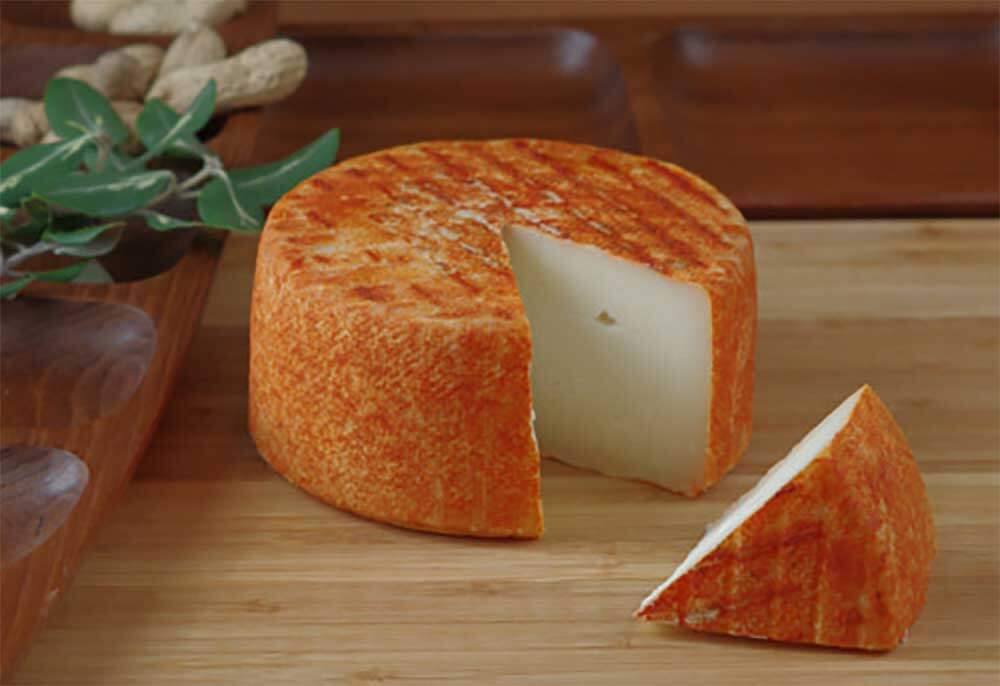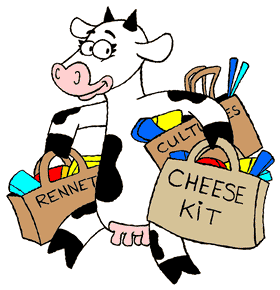
Ibores Cheese Making Recipe
Ibores in an all time favorite cheese of Spain, it comes from the far west of the country. Until recently, this was perhaps one of the least known parts of Spain. The region it comes from is the land of extremes, as noted by the name, Extremadura.
-
Yield
3 Pounds
-
Aging Time
~2 Months
-
Skill Level
Intermediate
-
Author
Jim Wallace

Ibores Cheese Making Recipe Info
Origin of Ibores Cheese
Spanish Cheese Heritage
About Ibores Cheese
Flavor & Characteristics of Ibores
Ingredients
Total price for selected items: Total price:
Black Friday Sale! Up to 20% Off Sitewide

Instructions
-

Acidify & Heat Milk
Heat 3 gallons of milk to 86°F (30°C). You do this by placing the milk in a pot or sink of 120-140°F water. As the milk reaches the target temperature, add cool water to the hot water until the water bath is about 2-3°F above the target temperature. If you do this in a pot on the stove, make sure you heat the milk slowly and stir it well as it heats
Once the milk is 86°F add 1/16 tsp of MA 4002 Culture. This is a combo of Mesophilic, which will lead the conversion of lactose to lactic acid, and Thermophilic, which will produce minimal acid development but shines in the aging room to help develop a supple texture in the final cheese.
To prevent the culture from caking and sinking in clumps, sprinkle it onto the surface of the milk and wait 2 minutes for the culture to re-hydrate before stirring it in.
Allow the warm milk to rest quiet for 60 minutes while the culture revives and begins to ripen. It will produce a small amount of acid during this time and should be keep warm.
-


Coagulate with Rennet
After ripening for 60 minutes, it's now time to add 1/4 tsp of single strength liquid rennet.
Alow the milk to sit quiet quitely for another 60 minutes while the rennet coagulates the curd. The milk will begin to thicken (flocculate) at about 15 minutes,but will need to sit for the full 60 minutes for a proper curd to form. The thermal mass of the milk should be enought to keep the temperature elevated while the milk sits, it's ok if the temperature drops a few degrees.
To check for a good curd, insert the flat of a knife into the curd at a 45 degree angle and lift slowly until the curd breaks. The edges of this break should be quite clean and the whey that rises should be clear and not cloudy.
While waiting for coagulation, you can sanatize your cheese mold and draining cloth.
-


Cut Curds & Release Whey
When a firm curd has formed, it can be cut into 1/4 inch pieces. Adter cutting allow it to rest for about 10 minutes. Don't let the curds mat together, but give them enough time for a good layer of whey to rise to the top. If they start to mat, give them a gentle stir after about five minutes, then let them settle again.
Note: I cut my curds by making a large vertical crosscut with a long knife. Allowing the curd to rest for a few minutes and whey to rise up, then I use a whisk with thin wires make the final 1/4 inch cuts
-




Drying the Curds
Now it's time to dry out the curds. This is done by bringing the heat slowly back to 86°F (30°C). The total cooking time will be 30 minutes and may be extended a few minutes if the curds are still too soft. The curds should be stirred gently during the time so they don't mat toghther.
The final curds should be cooked well through and should be examined to make sure enough moisture was removed. A broken curd should be firm throughout and the curds should have a moderate resistance when pressed between the fingers.
When this point is reached the curds can be allowed to settle under the whey.
-




Forming the Curds
The sanitized mold and drain cloth should be in place at this point and the dry curds are now ready to transfer to the mold. Begin by allowing the curds to settle to the bottom of the pot and then drain the whey down to about 1-2 inches above the curd mass.
The curds can then be given a good stir to separate them before transfer. The curd can then be transferred to the form along with the remaining whey. The whey tends to float the curds into position and minimize any mechanical holes. A good hand pressure will help to consolidate the curds.
Neatly fold the draining cloth on top of the curd mass and place the follower on top.
You are now ready for pressing the cheese.
-




Pressing
For pressing, begin very light and slowly then increase the press weight to a moderate level:
- 60 minutes at 25 lbs
- 90 minutes at 50 lbs
- 4 hours at 75 lbs
After the initial run of residual whey from the form, the rate of whey running off is simply a matter of drops and not a stream of whey being released. This is a good rate of whey removal during pressing and will slow even more as the residual free moisture is released. The form should show tears of whey weeping from the form very slowly. When this stops you can increase the weight slightly.
The cheese should be removed from the press, unwrapped, turned, re-wrapped, and put back to the press at the above intervals to assure an even consolidation.
At each turn you will notice the cheese has formed a smoother surface and rests lower in the mold.
-

Salting
The pressed cheese should now have a nice smooth rind with no openings in the surface. Any cracks or openings will lead to problems with mold in the aging room.
You should have a saturated brine prepared for salting this cheese. You will find all of the details you need on brining here.
A simple brine formula is: 1 Gallon of water to which is added 2 Lbs of Salt, 1tbs. Calcium Chloride (30% solution), and 1 tsp. white vinegar.
The cheese now needs to be set in the brine for about 3 hours. The cheese will float above the brine surface so sprinkle another teaspoon or 2 of salt on the top surface of the cheese.
Flip the cheese and re-salt the surface about half way through the brine period.
-




Preparing the Rind
At the end of the brine bath, wipe the surface and allow the cheese to surface dry for a day or two before waxing. The surface will darken somewhat during this time and a white dry powdery surface will appear.
The next step is what makes this such a fabulous cheese! This region of Spain is also known for the special Smoked Paprika that it produces and this, along with the local olive oil is used to prepare the rinds. This rind treatment does ward off the molds as well as produce a very wonderful aroma and flavor that slowly permeates the cheese.
The cheese is brushed clean of any mold or loose surface powder to prepare a nice clean surface for the oil/paprika coating. I prepare the mix with just enough oil to make a thick paste/slurry to coat the cheese. Remember the Paprika is the key here for the flavor/aroma.
The Cheese is then rubbed with the Paprika until it is well coated. In a day or so the oil will be absorbed into the cheese, leaving a dry Paprika coat on the outside.
This treatment can be repeated as needed to remove any molds that try to grow and to add more Paprika for flavor.
-

Aging
The cheese can then be placed into your aging space at 52-56°F and 80-85% moisture. The cheese can be aged for 4-6 weeks and it will be ready for your table.
Get up to 20% Off Sitewide
Early Access Black Friday
You May Also Like

































